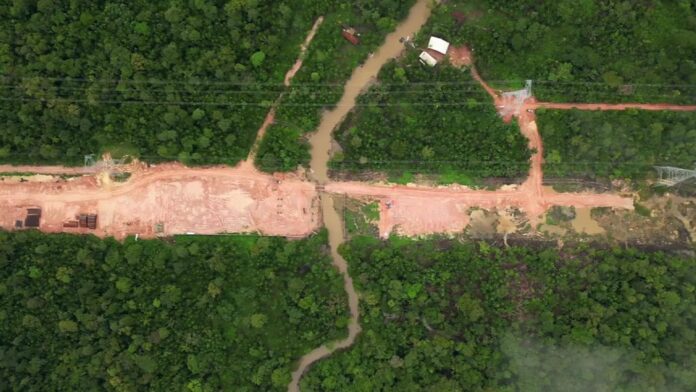By Fatimah Idera
In a bid to prepare ahead of the COP30 climate summit in Belém, Brazil, a four-lane highway is under construction through tens of thousands of acres of the Amazon rainforest.
The road is intended to ease traffic for the more than 50,000 people expected to attend the conference in November.
The Brazilian government has called the highway sustainable for clearing rainforests for a climate summit.Alongside the newly built road, logs are seen being piled up from the trees cut down to make way for construction.
Scientists have also raised concerns about the highway’s impact on the rainforest ecosystem, warning that it disrupts wildlife movement.
Professor Silvia Sardinha, a wildlife veterinarian and researcher at a university animal hospital near the new road, said the effects of deforestation are immediate.
“We are going to lose an area to release these animals back into the wild, the natural environment of these species and Land animals will no longer be able to cross to the other side too, reducing the areas where they can live and breed.”
Brazilian President Luiz Inácio Lula da Silva has promoted COP30 as an opportunity to highlight efforts to protect the Amazon.
However, Sardinha suggested that while the summit will feature conversations at a very high level, among business people and government officials,locals living in the Amazon are not being heard.
How Rainforest leads to Deforestation
It is of no news that deforestation means cutting down the trees to a large extent be it forests, any barren land or trees we see on our way to school every day.
Globally, approximately 10 million hectares of forest are lost annually. (nearly 25 million acres) of forest are lost each year, with most deforestation occurring in tropical forests in areas like Brazil, Indonesia, and the Democratic Republic of the Congo.
Deforestation affects climate change by releasing greenhouse gases that trap heat and warm the Earth. Trees are major carbon sinks, meaning they naturally absorb more carbon than they release. On average, forests absorb more than twice the carbon they emit. When trees are cut down or burned, they stop absorbing carbon, and the carbon stored in their wood is released into the atmosphere.
Estimates suggest that deforestation accounts for around 12-20% of global greenhouse gas emissions.
Expert insight
In and interview with a Silver Trust Recycling Center worker at Osogbo, Faridah Igbayilola spoke on how clearing the Amazon could have effects on the environment
Faridah explained that the Amazon rainforest is basically the lungs of the Earth which supports biodiversity, regulates the water cycle, and absorbs carbon dioxide. “But when you clear-cut the rainforest, you’re looking at a loss of habitat for countless species, a spike in greenhouse gas emissions, and a disruption to the water cycle”, she revealed
However it’s time for countries to work together to address climate change and protect the environment. As the host of COP30, Brazil has a chance to show its commitment to sustainable development and environmental protection.




